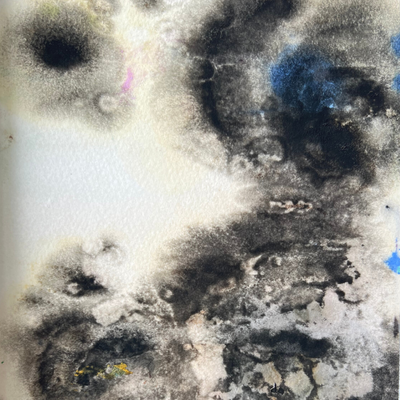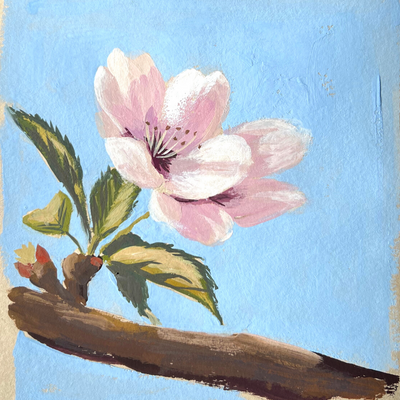How to avoid gouache molding?
I know what you’re thinking: “What is gouache molding?” (or moulding, depending on where you live!) If you’re an artist, it’s probably one of the most terrifying words you’ve ever heard. Gouache molding isn’t as scary as it sounds—and if you take the proper precautions, there’s no reason it should be. So what is gouache molding? And why do you need to take precautions against it?
What is molding?
A mold (or mould) is a fungus that takes the form of a powder-like substance. The dust-like appearance of molds is due to the formation of spores containing fungal secondary metabolites, and these spores are the dispersal units of fungi.
Molds are a type of fungi, and they’re present everywhere—including in your house. They can infect anything organic, including paint. When mold spores are present in the air, they can land on a wet surface and start to grow. Mold grows best in warm, dark, and moist environments.
Once the paint is contaminated with mold, you cannot use it anymore, and you need to throw it away and clean it thoroughly with alcohol or any disinfectant. Gouache and watercolor paints, even when dried, have a high water content that creates an ideal environment for the growth of microorganisms. Once they take hold, they will reproduce quickly and invade the entire surface of your palette.
The tropical climate is increasing the risk of molding. In some countries, you’ll never get it. Mold spores are everywhere but can’t grow unless conditions are right.

Prevent mold from growing
Mold spores are everywhere, in our water and air and on our brushes, paper, and clothes. We do not see mold spores around because they need the proper growth conditions. If we remove those conditions, there will be no mold. Mold likes humidity, warm temperature, and darkness. If your paint isn’t exposed to these factors, mold won’t attack it!
Keep your gouache paint in a tube.
The most important thing you can do to avoid gouache molding is to keep your paint in its original tube. This way, it’s sealed tightly so that no air or moisture can get in. But sometimes, you’ll want to store your gouache paint in a portable palette for Plein air painting, for example.
Let your paint dry.
Mold spores develop in a humid environment; if you let your paint completely dry, you will avoid mold development. I wouldn’t recommend this for gouache; if you want to use the creamy consistency to get the most out of it, you need to keep it moisturized.
Be careful with airtight palettes.
To keep your gouache paint moisturized, you can store it in airtight palettes. Especially if you live in a tropical climate, you should take some precautions when using an airtight palette:
- don’t fill too much your containers
- open it at least once a week to check the molding
- when molding appears, act immediately: clean and disinfect the contaminated containers so it doesn’t spread
- You can add some drops of isopropyl alcohol to your sprayer. Isopropyl alcohol is a chemical that kills mold, it’s also known as “rubbing alcohol” and is available at most drug stores and grocery stores.
- Adding a few drops of Oil of Cloves to the underside of the palette lid will keep it from growing mold.
- Store your airtight palette in the fridge, as the low temperature will prevent mold from growing.

How to clean your molding palette?
If you get mold in your airtight palette, it will begin with one or two containers. If you don’t clean them as soon as possible, the molding will spread everywhere in the palette. Using a palette knife, remove the contaminated paint, and clean your palette knife with a cloth. Remove as much paint as possible with the knife, then use Q-tips to clean the well. Wash your palette with warm water and dish soap, then dry it with a cloth or paper towel. Once you have cleaned the paint, wipe your palette with rubbing alcohol. This will help to kill any remaining mold spores. After cleaning your palette, wash your hands thoroughly with soap and water.
Some brands are more inclined to molding.
Honey is a commonly used material in gouache paintings as a preservative. However, honey can also contribute to the molding of your paint! It seems that the fungus loves honey, and it acts as food. I’m living in Europe, in a moderate climate, and the only time I had molding was with honey in the paint stored in an airtight palette. So I stay away from brands that contain honey, as I always keep my paint in an airtight palette.
Store your gouache paint properly.
You should keep your gouache paints in a cool place. If you live in a hot climate, don’t leave your gouache paints in direct sunlight or in the car, where they can get extremely hot. Being too hot, they will dry in the tube. You can see here how to revive your dry tubes. You can keep your tubes in a box, a drawer, or anything that is not directly under the sun or heat.
- Don’t store paints in a humid place, and humidity can cause the gouache to mold.
- Don’t store your paints in places where they will get hot.
Conclusion
So, how to avoid gouache molding? The best way to deal with mold is to avoid it! If you paint regularly, mold won’t appear in your palette.









